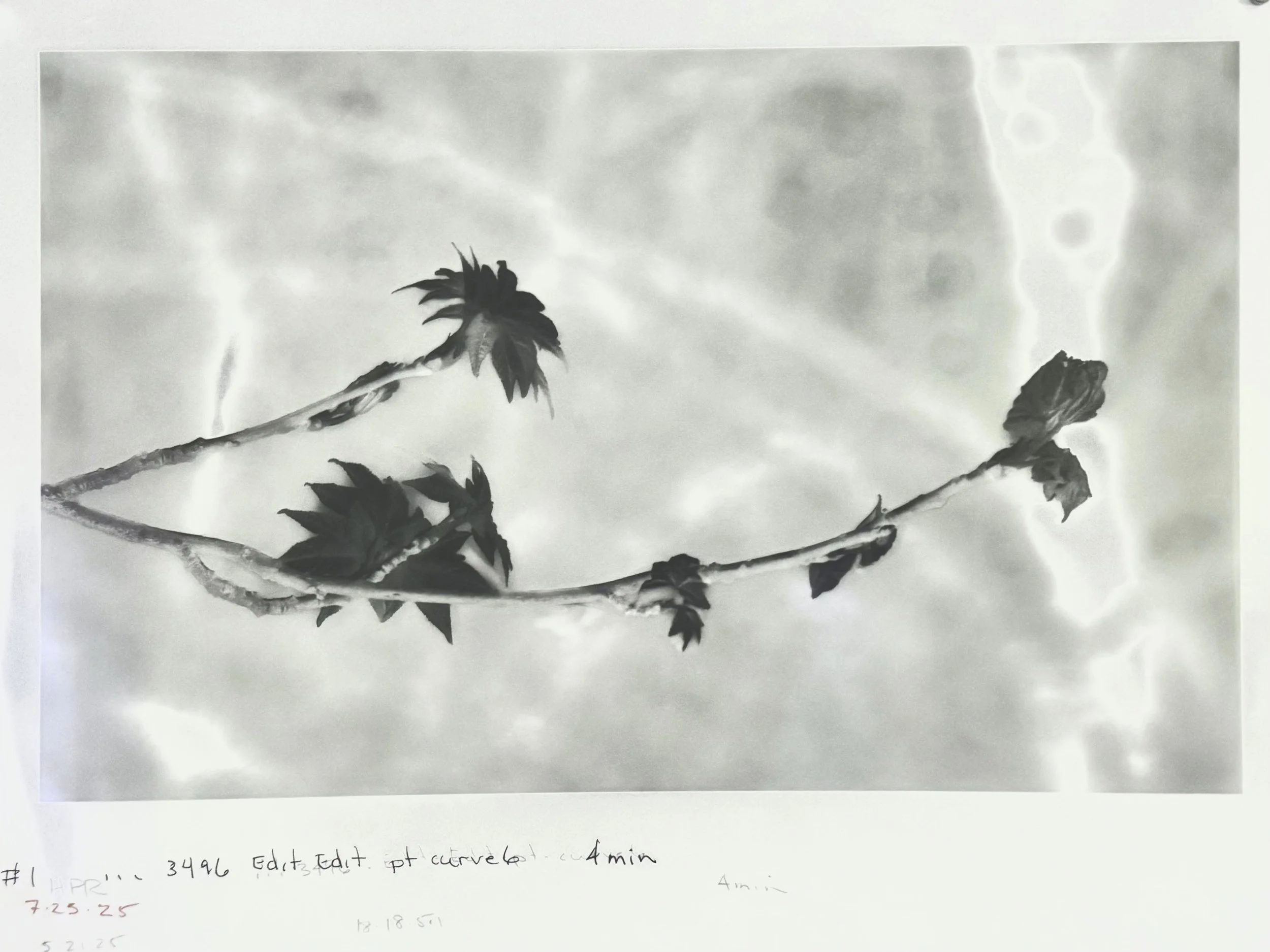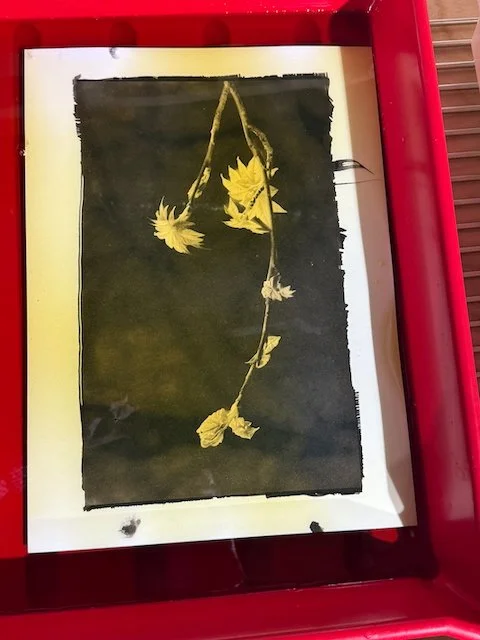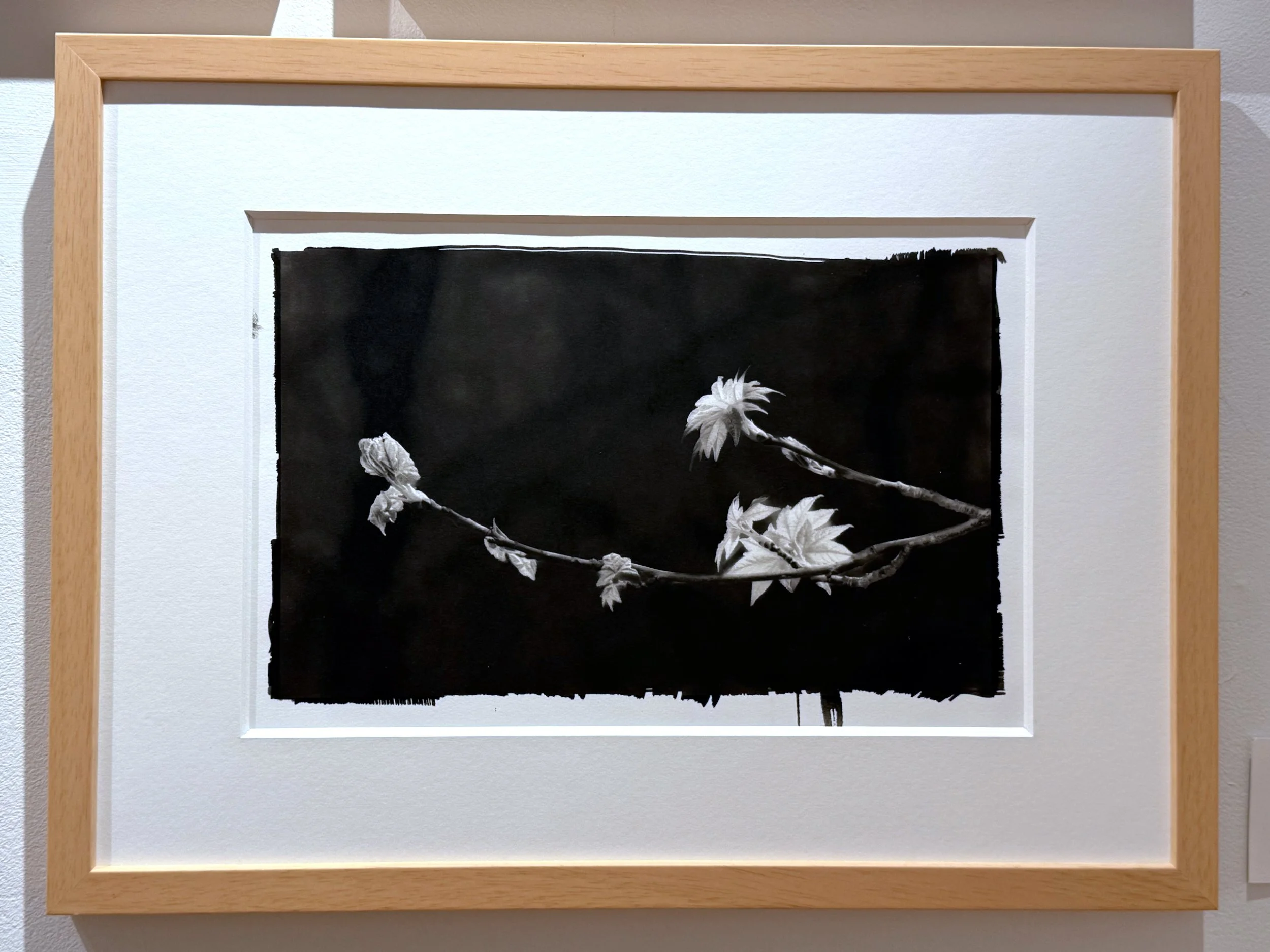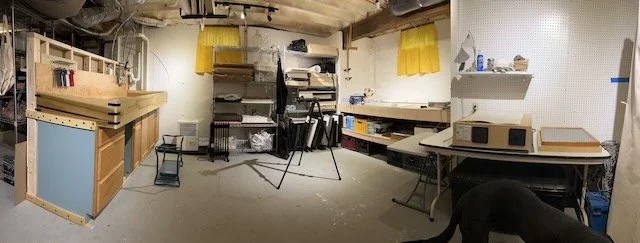Steps for Making a Platinum/Palladium Print
Platinum/palladium prints are made by coating paper, usually watercolour paper, with a light sensitive solution of platinum and palladium salts. After the paper is dry the paper and negative are sandwiched in a frame to hold them tightly together and exposed to ultraviolet light. The exposed print is then put in a developer. The final steps are putting the print in two clearing baths and a last wash in plain water. Illustrations of the steps in the process are below.
The positive image in the digital photograph is converted to a negative in an image editing program. The physical negative is then printed, in reverse, on a transparent film.
Coating the watercolour paper with a solution of light-sensitive solution of platinum/palladium salts.
Dried paper and negative in the contact frame ready for exposure to ultraviolet light. A good contact between paper and negative results in a sharp final image.
After exposure a ghost of the image is present. The split back of the contact frame allow for checking the print while keeping the print and negative in registration.
The exposed print is placed in developer for about 5 minutes.
The fully developed image just needs to be cleared of any remaining chemical and washed with plain water.
Developed, washed, dried, and framed print.
Visit My Working Space
Come and have a virtual visit to my new “dark room.” You’ll see that it isn’t really dark. Many alternative process printing techniques can by done in low light as long as ultraviolet light is excluded. You’ll see yellow curtains on my windows for that reason. Yellow is good at blocking uv light.
Moving to a new house gave me the opportunity to build a spacious sink for my photography workspace. This is a timelapse of its construction.
Darkroom with finished 8 foot sink, storage shelves, work table, and ultraviolet exposure box. (left to right) The yellow curtains block ultraviolet light. Work can be done under a moderate level of artificial light.






